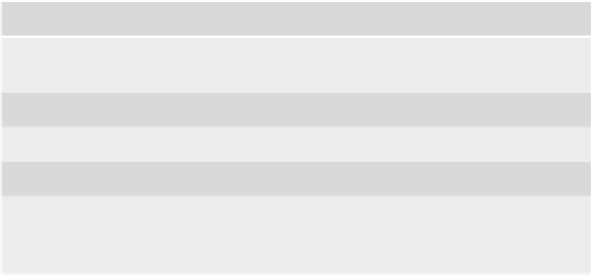Biology Reference
In-Depth Information
Table 1
Hunt and Hess classifi cation of SAH
Grade
Description
1
Asymptomatic or mild headache
2
Cranial nerve palsy and moderate to severe headache, nuchal
rigidity
3
Focal neurologic defi cit, confusion, lethargy
4
Stuporous, hemiparesis, early decerebrate posture
5
Comatose, decerebrate rigidity, morbid appearance
One point is added for associated systemic illnesses that may
include: HTN, DM, atherosclerosis, COPD, or documented
severe vasospasm
determine the ideal time to operate after SAH. It was with a few
modifi cations to this scale that the Hunt and Hess scale was devel-
oped (
7
). The Hunt and Hess scale was based on the scientifi c
understanding at the time which placed importance on the degree
of meningeal involvement, severity and presence of neurologic
defi cits, and presence of coexisting medical disease (although often
the addition of this axis is ignored). The grading scale (
8
) was further
adjusted in 1974 to include connotation for both unruptured
aneurysms (grade 0) and those aneurysms that caused a neurologic
defi cit without signs of aneurysmal rupture (grade 1a).
Some arbitrary nature relates to assigning a score via the Hunt
and Hess system and can provide inter-operator variability in score
assignment. It was determined that the fi ve point scale in wide use
today is graded using the three axis described above. Invariably,
however, every patient does not fi t easily into one score accounting
for much of the observed variance. The hemiplegic SAH patient
that does not have a headache and is otherwise neurologically
intact provides a clear example (grade I or grade IV). Using the
initial article as a guide, the addition of a single point for coexisting
medical conditions is not reliably done by those assigning points
and obviously medical comorbidities play an important role in
outcome prediction.
The Hunt and Hess scale has shown to be the most reliable
scale in regular use today to predict outcomes, (
9
) however, many
high-grade SAH actually had favorable GOS outcomes. It is also
important to note and has been recently demonstrated in the litera-
ture that detecting signifi cant outcome differences between a single
grade (
10, 11
) may not be possible using the Hunt and Hess scale.
This fact suggests that admission criteria provide only part of picture
in prediction of clinical outcome and other variables not present in
the Hunt and Hess scale are also important.







Search WWH ::

Custom Search